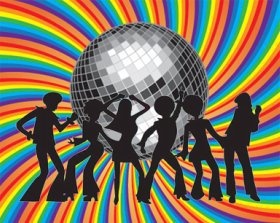
Today in class we were asked to participate in creative dance which required us to throw away our inhibitions and risk looking foolish. Surveying the room, I realised we were all in the same boat as I saw some apprehensive faces reflecting my own expression. I found the tutor’s high energy and large gesticulations helped put me at ease. I also thought about the children I will be asking, in the future, to engage in dance lessons and decided I needed to be brave and take the same risk.
As a child and especially as a teenager, I thoroughly enjoyed dancing; not formal or structured dance class, but disco dancing in the house and at nightclubs. Dancing is an excellent form of exercise that gives you a great cardiovascular workout and releases mood boosting endorphin. It is also a social activity that can strengthen friendships and may even change your life if, like me, you meet your partner at a dance club. Other benefits may include increasing confidence and promoting relaxation which could make children happier and help them to learn.
I expect my previous enjoyment of disco dance will help me teach children to dance as they will sense my enthusiasm. There may however be challenges in motivating children who lack confidence or have low self-esteem. Children such as these may require more support, encouragement and praise.
Promoting equality and inclusion may need careful consideration to ensure all children regardless of social background or ability/disability can participate. Consideration needs to be given to the environment to ensure there is enough space for the children to move freely, adequate lighting and no hazards such as obstacles that could cause injury. I would risk assess the space/room to be used and make any necessary adjustments to ensure it is fit for purpose.
Having read the document ‘Get Scotland Dancing’ I now realise how important dance is for cultural expression and strengthening ties. In Scotland, dance is the fourth most common cultural activity and the range of styles is growing in keeping with increasing diversity. Celebrating diversity in schools means it is important to include every child’s cultural dance although this may be difficult with time constraints.
As the number of children, particularly girls, achieving their recommended physical activity of one hour per day decreases as children get older and as statistics indicate more girls than boys enjoy dance (62.4% to 11.5%) promoting dance may help girls meet their daily target.
